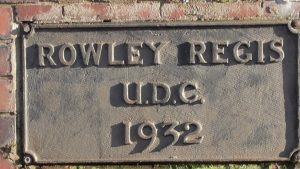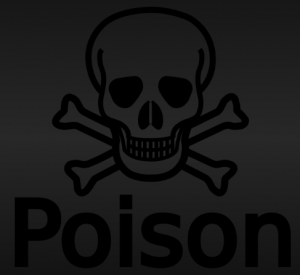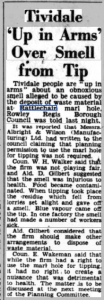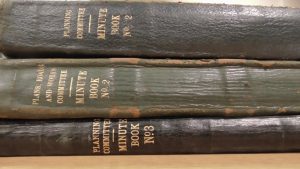Another explosive revelatory newspaper article has come to light from Tuesday 1st April 1958 Birmingham Daily Post. The headline
“Tividale ‘Up in Arms’ over smell from tip” is certainly no April fool, but just further confirmation that this site was on the radar of both local people and the then Rowley Regis council. The council themselves had already raised the concern about phosphorus at the site being “a peril to children” just five months earlier.
The “obnoxious smell” coming from the named “Rattlechain marl hole” is clearly connected to the waste that Albright and Wilson were dumping there. Connected by the people, the newspaper and by the councillors. At this point in history there was no licence required or waste permit and no inspections. We also know that British Waterways were also using it as a free for all tip from the canal side at this time.
It is also incredible that Albright and Wilson had the major “Oldbury Smell” issue at this very same time, and had claimed via their political spokesman, that they were going to dispose of it into the sea. It appears beyond possible coincidence that these smell issues are unconnected.
“It was claimed that Messrs Albright and Wilson Manufacturing Ltd had written to the council claiming that planning permission to use the marl hole for tipping was not required.”
This of course is hotly debateable and it would have been interesting as to how Albright and Wilson had come to this conclusion in the letter to the committee.
“Ald D. Gilbert suggested that the smell was injurious to health. Food became contaminated”
“When tipping took place the residue which fell from the lorries set alight and gave off a smell. Blue vapour came off the tip. In one factory the smell had made a number of workers sick.”
He is of course absolutely correct in stating this, though appears to not see the linkage of why the firm should not be tipping in the open air.
The described situation at this site is clearly stating that
- Deliveries of waste were being made by road haulage to the site- as was also stated in the article about the white phosphorus being a “peril to children”
- White phosphorus is the waste being described here- and it was falling off the lorry and catching fire!
- The associated smell was phosphine gas- and no doubt the blue vapour further proof of this!
- Of course it made workers sick FFS! It is a highly toxic gas, and the owners of this site appear, and still appear to have a problem with their same gas.
“Alderman Gilbert considered that the firm should make alternative arrangements to dispose of waste material.”
Absolutely correct, but this was a firm with a family linkage to every facet of high society and friends in high places- like the councillors running the rotten Oldbury borough at this time.
“Councillor E. Wakeman said that while the firm had a right to use the marl hole for tipping, it had no right to create a nuisance that was detrimental to health. The matter is to be discussed at the next meeting of the planning committee.”
It is again the case that Albright and Wilson’s “right” is not particularly certain at all, either legally and certainly not morally.
Obviously this article asks further questions as to what happened next with this story and what was actually discussed and recorded at the next planning committee of the Rowley Regis council? As I currently cannot find any further story in connection with this, the only course was to see what remains of planning records for this borough.
Rowley Regis Borough Council.

Very little evidence remains of the existence of this authority- like this canal bridge plate in Tividale.
This authority ceased to exist in 1966 when it merged with the rotten borough of Oldbury and Smethwick and became “Warley”. A further eight years later would see it become part of Sandwell Metropolitan Borough council. It is this authority which holds all existing known records of the former Rowley Regis Borough in its archives.
According to the archivist at Sandwell I spoke to, the story goes that on Rowley Regis ceasing to exist, the town hall and the Town Clerks office was sealed up for around 30 years. It was only on demolition of the building, (I believe to extend Haden Hill Leisure centre) that the room and the one inch thick dust that had accumulated revealed some of the treasures left there. Unfortunately a broken window in the room suggested a possible break in had occurred at some point, but with much of what was there going in skips, someone thought to save at least some of it. And so below the three surviving volumes related to matters planning in Rowley Regis that someone had thought to preserve are all that appears to be left. These are
Planning Committee – Minute Book 2 (03/03/1950 -01/12/1954)
Planning Committee – Minute Book 3 (05/01/1955 – 25/07/1956)
Plans, Road and Works Committee – Minute Book 2 (03/01/1947 – 30/07/1951)
Unfortunately and also rather conveniently of course, no minutes exist for the year in question that would record what was said about this article and the rattlechain marl hole smell, as well as if the council concluded that Albright and Wilson did not need planning permission to deposit waste there and also why if this was the case?
There are a few interesting observations within the books and some of the councillors mentioned in the article appear, but the only reference to the area concerns the Brickworks.
This refers to the interim development order in 1947 to which there is also a great mystery. The mystery is that no planning permission was ever given to Albright and Wilson to tip waste at the site when they were alleged to have “acquired” the site in 1948.
Albright and Wilson’s claim that they did not need planning permission in the article is highly dubious as this was a clear change of use for the site- but as we know when they acquired the licence in 1978, it was then stated that the site had been “operational since 1942”- indicating that they were using it then at a time when they were still a British Government Ministry of Supply contractor in World War Two, as well as being on a care and maintenance basis at their Langley factory.
Another source from a planning file comes from the development of the adjacent former London works steel factory, now the Autobase site. This is entitled “Note for file :tipping at rear of London Works Steel premises Tipton Road Tividale.
Part d of this confirms the fact that Barnett’s brickworks had a planning application never determined and which I have looked at HERE in the 1940’s planning history for this site.
“The plans on microfilm appear to include the site of what is now the Albright and Wilson pool in the application site at the rear of the sewage works but not land west of John’s Lane, therefore , not including any part of the London works steel site.”
Unfortunately it appears that the councillors at Rowley Regis, though playing to the gallery of public concern were behind closed doors very poor at determining the facts of the case, though if they did , this was a time when money in envelopes changed hands, and “the society of friends” could influence their way into getting their filthy way.
None of this history of public ill health connected to this site was ever discussed by The Health protection agency in the so called Human health risk assessment– the history supplied by the liars at Trinity Street was simply air brushed out or made vague. Liars of works managers like Peter Bloore made up stories about “toothpaste” to hide what real waste had been dumped there and its clear dangers, dangers that were being felt here.
It is also worth mentioning the Chemical Hazards and Identification Risk Surveillance group’s take on the fact that the site was clearly causing deaths of birds by systemic phosphorus poisoning.
When the ill judged housing on the adjacent former sewage works was approved under appeal, none of this information had come to light and even the chairman (person) at SMBC of the planning committee at that time, (a GP herself no less), didn’t appear to have a clue as to what was dumped in there, or offer any opinion on the public health issues surrounding it.
Rattlechain lagoon and its contents remain a threat to public health whatever anyone claims to the contrary. It just now has better “labelling” than it did when the stench of Albright and Wilson used to tip their toxic waste there.






